7. SOAPSonar – Baseline and Regression Testing
We all have had experiences were “someone” decided to make a slight “tweak” to some code then promptly forgot to mention it to anyone else or at least the right someone else. That slight tweak causing some change, be it expected or not, that causes other parties to spend hours trying to trace the cause.
One of the key benefits of automation is the ability to identify any changes to XML by doing a XML diff. Comparing one version (Baseline) to that of another, (Regression Test). With web services API, we interested in the Request and Responses to ensure that they are not different, or rather that only expected differences are there. We need the flexibility to ensure that a some of the parameters be ignored, when they expected to be different each time. Take for instance a file reference number or a service that returns the time. We may want to check to make sure the fields for Hour, Minute, Day, Month, Year etc remain unchanged, but perhaps we wish to accept changes to values in the fields, or limit these to certain parameters. Establishing what to check against the baseline and what not to, is an important part of regression testing.
Here is a Very Simple Baseline and regression test, using the SOAP Calculate Service.
1. Run SOAPSonar (with Admin Rights). Paste
http://www.html2xml.nl/Services/Calculator/Version1/Calculator.asmx?wsdl
into the Capture WSDL bar. Select Capture WSDL.
2. Lets use the Add Service. Select Add_1 and enter a=3 and b=3. Commit, Send. Hopefully your response was 6. If not, perhaps I could suggest some services? Rename it baseline.
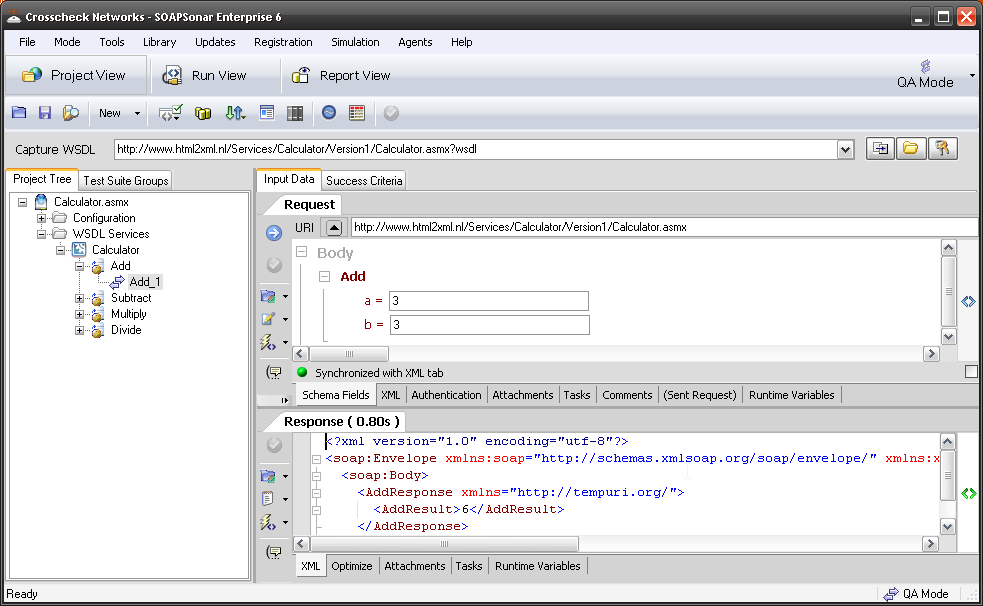
3. Now lets select Run View, Drag Baseline into the DefaultGroup. Now select the Icon Generate New Regression Baseline Response Set.
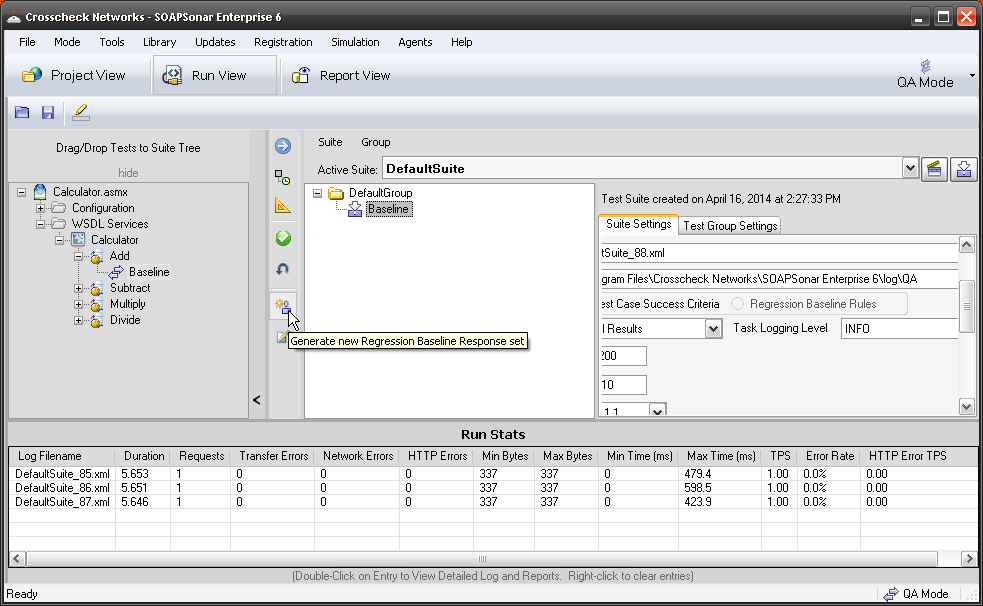
4. Select XML Diff of Entire Baseline Response Document. This option matches both nodes and values.. Select OK, (Commit and Send if you need to)
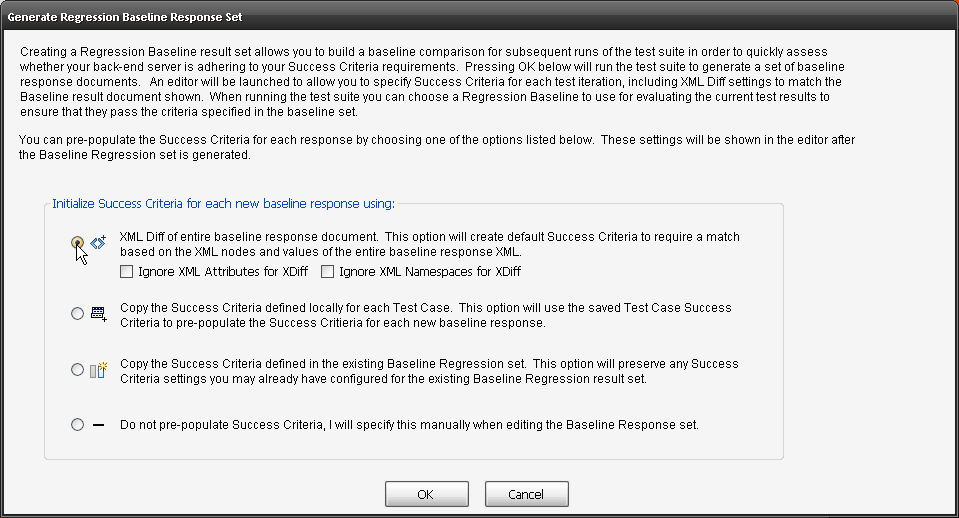
5. After the test is run, you will see the Test Suite Regression Baseline Editor. This is were you can select what you wish to watch or ignore. Automatically a base rule is generated. If you select Index 1, you should have 1 rule XPath Match. If you select XPath Match, you should see all the nodes graphically laid out for you. At the bottom you have 3 tabs. Baseline Criteria, Baseline Request (Captured Request), Baseline Response (Captured Response). For now, lets not change anything and just select OK.
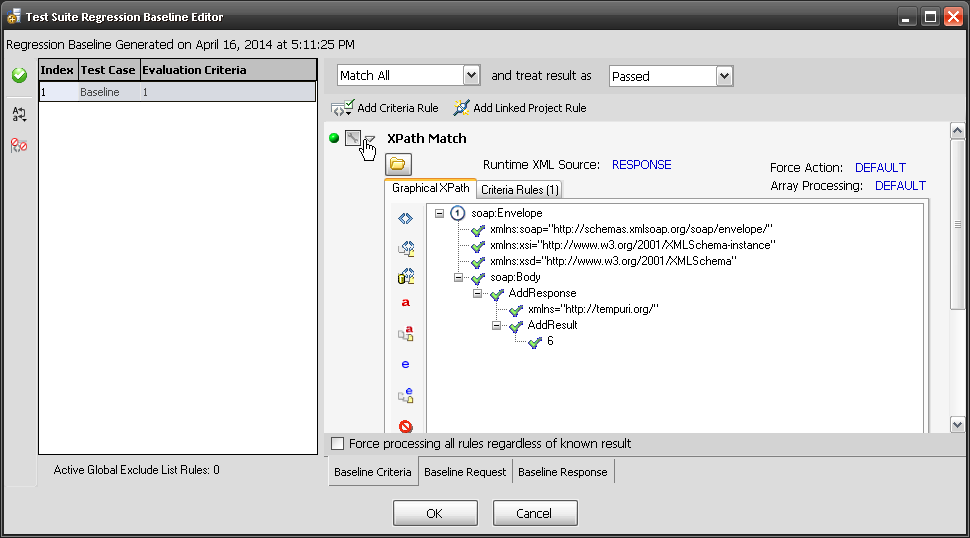
6. Lets go back to Project View, and change our b= to 9. The response should now be 12. Commit and send to Check. Then select Run View and change the Success Criteria to Regression Baseline Rules (See cursor). Commit and Send. This time, did your Success Criteria Evaluation Fail? It should, as it was expecting 6 as a response and not 12. Analyse Results in Report View.
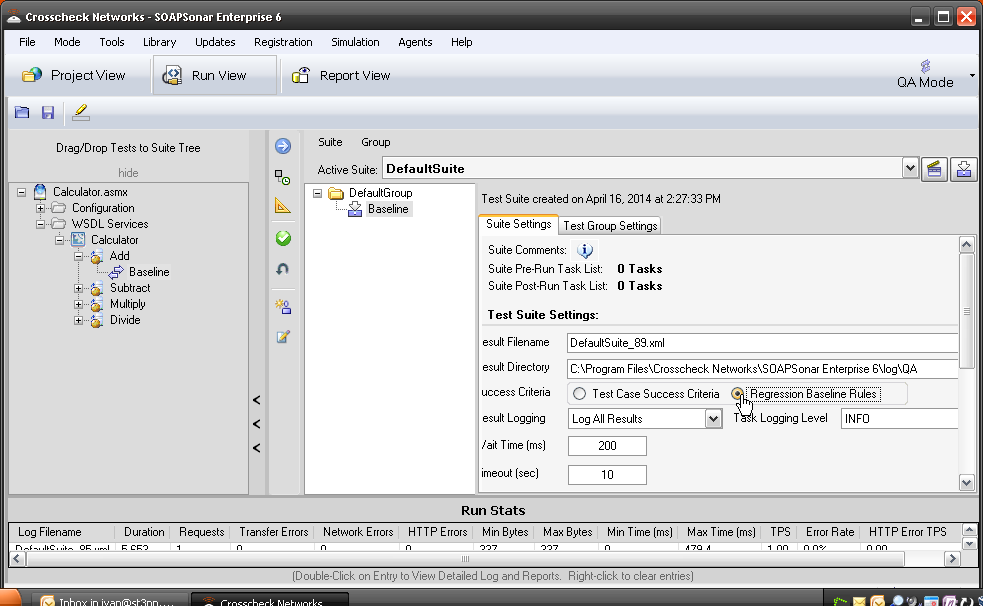
7. If you now select that failed test case and then select the tab Success Criteria Evaluation, you see that Regression Baseline XML Node and Value Match failed, and it was the AddResult value.
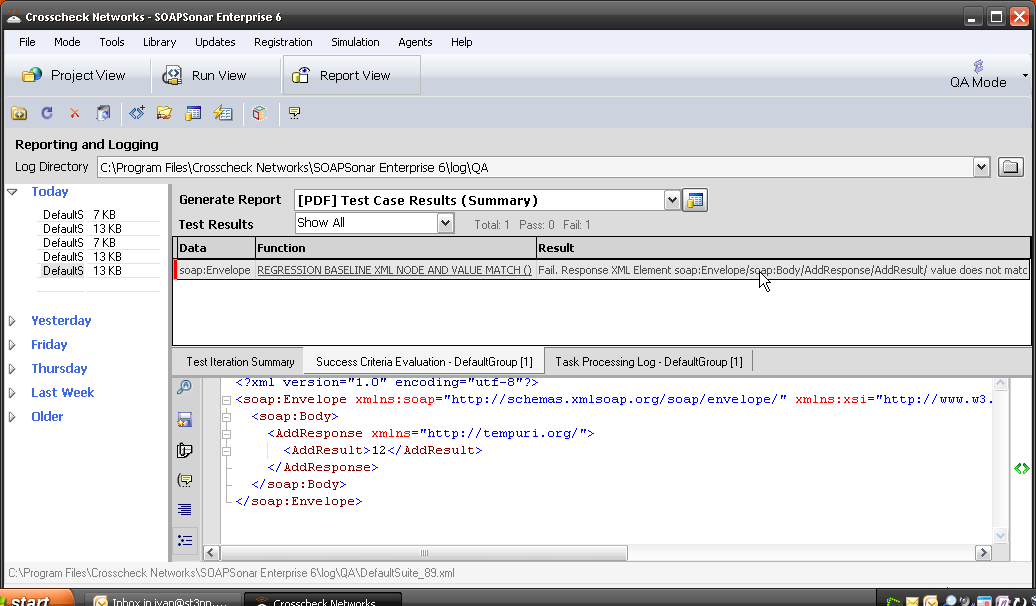
8. Select Generate Report, then [HTML] Baseline Regression XML Diff Report and generate the report. Then View the report. Select Response Diff for Index 1. 1 Change found and you can clearly see it marked in Red.
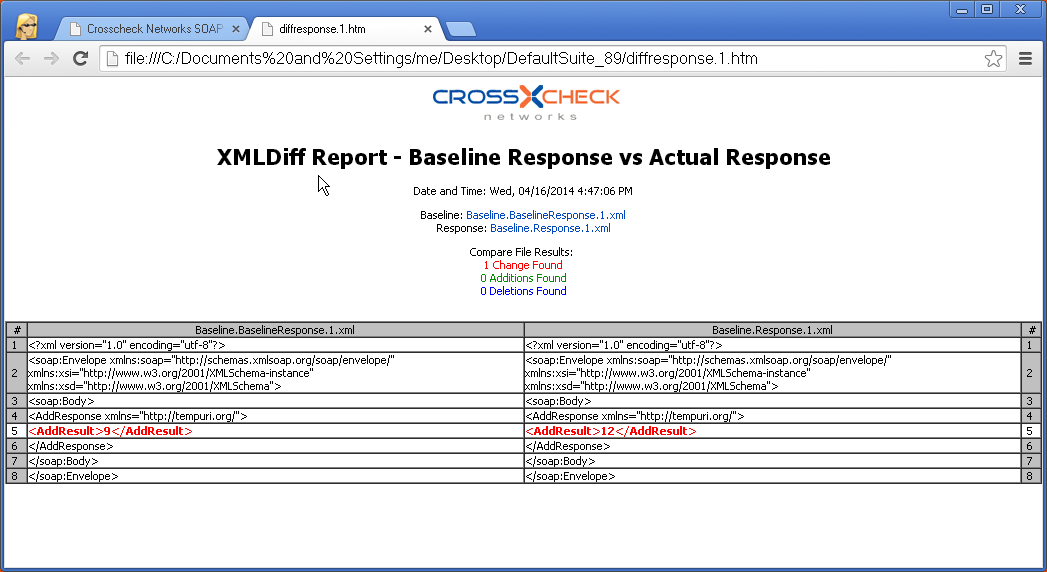
9. Now lets ignore the response value, but maintain regression for the rest of the test case. Select Run View, then Edit Current Baseline Settings.
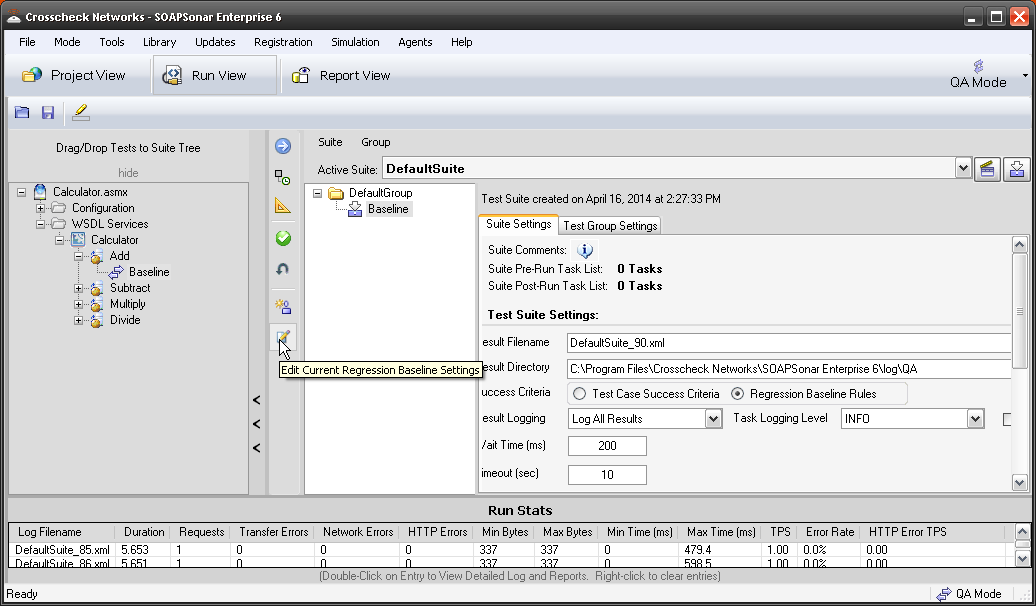
10. You should be back in the Test Suite Regression Baseline Editor. Select Index 1, then your rule and right click on AddResult in the visual tree. Select Exclude Fragment Array. It should show now in Red as excluded. Ok, Commit and Send. Your Regression Test should now pass, as everything but that value is still the same.
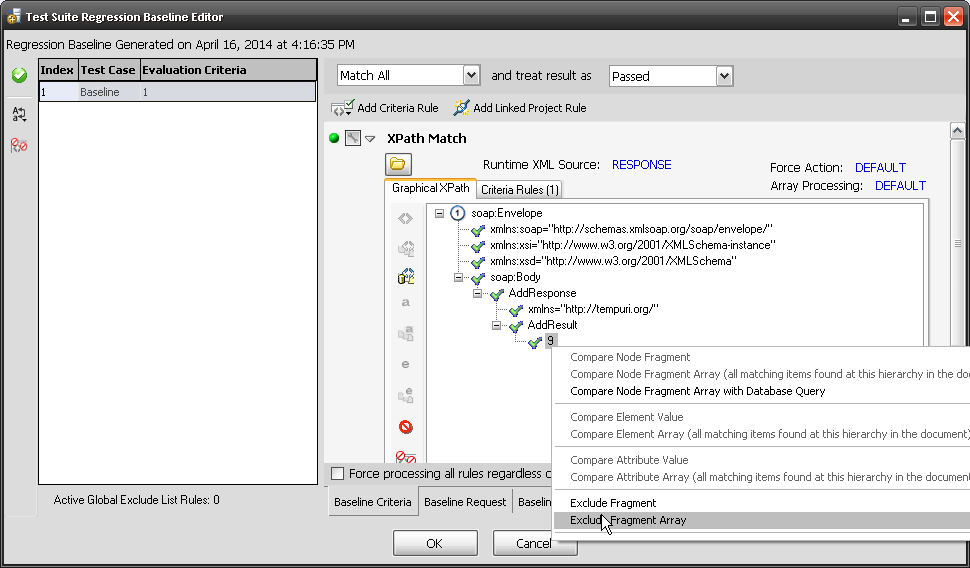
Conclusion
Automation of Regression Testing is far more than running an XML Diff. It involves selecting what aspects are expected to change and what aspects are not. By eliminating expected changes, any failures in future regression tests can receive the focus they deserve. Once automated, this can be run, hourly, daily, weekly or as needed, consuming little to know human interaction. Many of our customers, maintain a baseline and consistent regression test on 3rd party code. Any service their systems rely on, which they are not personally aware of development cycle. Continually testing through automated process to ensure they aware of any changes to the code.
Questions, Thoughts?







